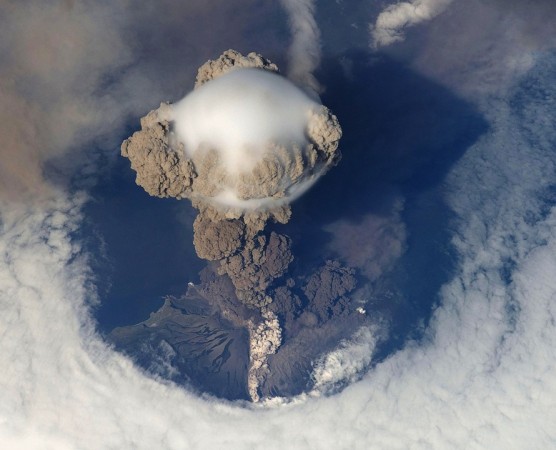
Scientists fear underwater supervolcano could blow and kill 100 million people after they find a six-mile lava dome near Japan.
Scientists have discovered a giant dome of lava beneath the Kikai Caldera supervolcano.
It is estimated to contain more than 32 cubic km (7.68 cubic miles) of magma and researchers believe the supervolcano could explode again.
The volcano last erupted 7,300 years ago and scientists have said the lava dome could kill up to 100 million people if it erupts.
Currently the dome is around 6.2 miles (10 kilometres) wide and formed after the last major eruption thousands of years ago when the volcano’s structure collapsed in on itself.
The submerged mountain is located near the Ōsumi Islands of Kagoshima Prefecture.
Researchers from the Kobe Ocean-Bottom Exploration Center (KOBEC) at Kobe University, confirmed the giant lava dome was created after a caldera-forming supereruption 7,300 years ago.
The eruption is understood to have wiped out the Japanese Jomon civilisation.
Kobe researchers have said if the volcano erupts again, it could trigger a ‘volcanic winter’ as the huge amounts of debris could potentially block out the sun for some areas.
The eruption could cause a tsunami which would hit southern Japan and the coasts of Taiwan and China, before striking the coasts of North and South America.
There is roughly a one percent chance of the giant caldera eruption occurring within the next 100 years.
An eruption like this would see over 40 cubic kilometres of magma released in one burst, causing enormous damage.
Kobe University researchers have carried out three survey voyages to the Kikai Caldera since 2015.
In March, researchers plan to use seismic reflection and underwater robots to “clarify the formation process of the two-layer caldera” and the mechanism that causes a “giant caldera eruption.”
The paper from Kobe University said: “Supereruptions leading to the huge caldera collapse are rare by extremely hazardous events, and also have severe global impacts such as ‘volcanic winter.’
“Many of these super volcanoes repeat super eruptions in their multi-million year histories. Although the volcanic activity is relatively quiet during the intervening periods between super eruptions, the post-caldera activity should provide a key to understanding the evolution of magma-plumbing system in the whole caldera cycle.”
The lava dome is in a caldera – which is a cauldron-like depression that forms following the collapse of a volcano into itself, forming a crater.
The dome rises to 600 metres (1,968.5 feet) above the seabed and is now only 30.5 metres (10 feet) beneath the surface.
The Smithsonian Institution said the volcano last experienced seismic activity between January 2013 and July 2014, which included one eruption with intermittent explosions, occasional ash and steam plumes sporadic weak seismic tremor.













